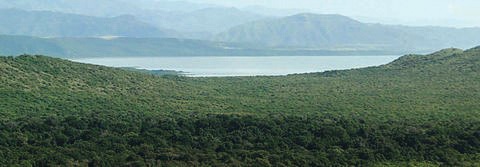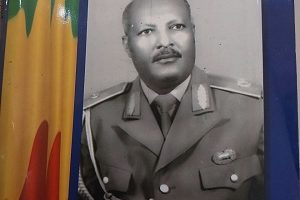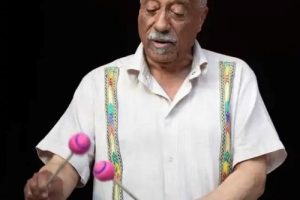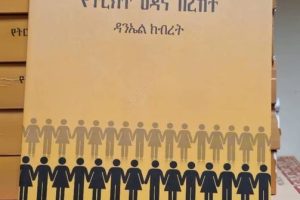
COMPILED BY STAFF REPORTER
The Zayse mother was not sure if she was more amused or annoyed at her teenaged daughter’s nervousness. She remembered the same feeling she had before a big event when she was a teenager.
“Mother, am I pretty enough? Does my hair look all right? Do you think Ido will notice me tonight at the ceremony? Will I ever get a husband?” she asked her mother with a voice that sounded disturbed and at the same time thrilled.
As her parent’s oldest daughter, Katrina will be the center of attention at the adolescent ceremony, where her father will at last become Ma gudona or big man. In Zayse culture, such event is an important occasion for both father and daughter, narrates an article written about the cultural value of Zayse tribes.
No doubt, Ethiopia is home to a number of ethnic groups that have their own unique cultural values and traditional norms. Among these tribes; the Zayse are the one.
The Zayse people live in the Arba Minch zuria, Gamu Gofa Zone of the Southern Nations, Nationalities and People’s State of Ethiopia about 522 km, 290 km and 22 km away from Addis Abeba, Hawassa and Arbaminch, respectively.
The Zayse land roughly lies between coordinates of 370 32”E to 370 380’’ E longitude and 60 00’’N to 60 06’’N latitude. Its area is 5525 km, 2 which accounts about 5 percent of the state’s land coverage.
The people of Zayse reside in three kebeles: Elgo, Wozaqa and Dambille; and the language of Zayse is called Zaysete or Zeysegna with Amharic language marking suffix -igna.
As studies indicate, the word Zayse is highly associated with a late Zayse ruling family who currently reside to the east of the Zayse area. According to Zayse people, the word refers to ‘warrior’.
The Zayse people have been called by different names by their neighboring dwellers. The Koore people, for example call them Zagisse which means ‘the earliest.’
Though little is known about the Zayse people in particular, it is assumed that their lifestyle is similar to that of other groups in the area. The Zayse base their economy on a balance between agriculture and herding.
Although they seem somewhat indifferent to farming, crops and livestock are probably of equal importance. During the dry season, the Zayse also engage in some fishing activities to supplement their diets.
Zayse people are also known for their unique house, called a Tukal. It is a circular hut made of acacia branches covered with grass mats. The cone-shaped roof has an opening to allow smoke to escape.
Their staple diet includes durra (a cereal grain), maize, beans, rice, milk, meat, and wild fruits. Coffee and tea are both popular beverages.
The Zayse family is headed by an authoritarian father who has the right to total obedience. Men usually have only one wife, and children are considered a necessity. The more children a Zayse man has, the greater his prestige.
Attaining warrior status is an important aspect of Zayse culture. Boys are taught to use spears and begin training to become warriors at an early age.
A basic value of the Zayse is Tokuma, which is identification with the group. Cooperation is central to this system, especially in work arrangements. The Zayse have a reputation for being easygoing and sociable. They value hospitality and almsg iving, but more to relatives and friends than to strangers.
The vast majority of the Zayse are animistic; that is, they believe that living things and inanimate objects have a soul or spirit. In southern
Ethiopia, the traditional beliefs, rituals, and dances vary slightly with each tribe. However, all groups worship a supreme, masculine sky god, whom they view as being remote and inaccessible. They also believe in the existence of Zar, or spirits that live near water and in other places. It is also believed the Zar may possess people.
Rituals for naming Zayse children are usually not held until months or even years after birth. The most important ceremony in the life of a Zayse man occurs after his first daughter reaches adolescence. This marks his passage to the prestigious status of Ma gudoha, or “big man.”
In the society, a clan is regarded as extinct if all male members of the clan die. But when female members are alive the clan is not regarded as non-existent however if the woman dies the clan is regarded as extincted as her children are members of their father.
The Zayse people had their own administration system. In the past, they were led by kaat who had absolute power, which had been transferred hereditarily; hence was primogeniture one- the right of succession belonging to the firstborn child.
Next to the Kaat, the Maagas had influential power. Elders also had strong influence in the administration and participated significantly in the traditional administration.
Many people agree that the Zayse people are similar to bees. Like bees, they protect the queen, and respect their leader- Kaat with affection and great concern. The Maaga’s duties are to protect
and to give to the Kaat the animal booty gained from the enemy in addition to participating in the administration. When one’s property like his sheep, goat, cattle and crops are plundered, the loser reports to Maaga.
If the wrong-doer fears punishment, he leaves for Buussa (south-east of Zayse). The father of the wrong-doer is asked to pay for the loss because it is believed that he has ill-brought his child in the childhood period.
Moreover, when ordinary men insulted office holders, they were punished. If one kicked somebody unreasonably, the disappointed man could bring his case to the Maaga in charge and the offender used to get punished.
On the other hand, their relationship with neighboring people was admired. The culture of peaceful co-existence with neighboring people is an accepted culture in Zayse.
The Zayse people, shop at the same market place, exchange produces, and intermarry with their neighbors, mainly with Busa. Busa and Zayse people used to eat foods and take drinks together at the time of drought.
They borrow crops one another during their shortages; they plough land in contract; and they build terracing together. With the highlanders, the Gamo people, they have very strong and healthy attachments. The Elgo particularly work as seasonal workers in Zayse.
(Source: ‘Ethno-history of Zayse People’ By Dagnenet Lake), Culture and Tourism Bureau of the South Nations, Nationalities and Peoples Regional State, 2013)
The Ethiopian Herald December 25/2020





